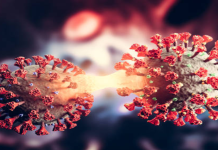
Modern medicine has made leaps and bounds in saving lives, especially in critical care situations. One such innovation is the Extracorporeal Membrane Oxygenation (ECMO) Program, a highly advanced medical treatment used in life-threatening cases where the heart and lungs are unable to function effectively on their own. ECMO acts as an artificial heart and lung machine, providing oxygen to the body when natural functions fail. In this blog, we’ll dive deep into what ECMO is, how it works, and its crucial role in saving lives.
What is ECMO?
Extracorporeal Membrane Oxygenation (ECMO) is a form of life support for patients whose heart and lungs are severely compromised due to conditions like severe pneumonia, heart failure, or respiratory distress syndrome. The ECMO machine takes over the job of pumping blood and providing oxygen to the body, allowing the heart and lungs to rest and heal.
The term extracorporeal means “outside the body.” So, the ECMO machine functions externally to oxygenate the blood and remove carbon dioxide, which are normally the responsibilities of the lungs. In addition, ECMO can support circulation by maintaining blood flow through the body, a task typically performed by the heart.
How Does ECMO Work?
In simple terms, ECMO works by taking blood out of the patient’s body, passing it through an oxygenator (a machine that oxygenates the blood), and then returning the oxygen-rich blood back into the body. The process involves three essential steps:
- Blood Removal: A cannula (a thin tube) is inserted into a large vein or artery to draw blood out of the body.
- Oxygenation: The blood is pumped through a membrane oxygenator, which adds oxygen to the blood and removes carbon dioxide.
- Blood Return: The oxygenated blood is then returned to the patient’s body, either through a vein or artery, depending on the type of ECMO used.
Types of ECMO
There are two main types of ECMO, depending on which organ system needs the most support:
- Veno-Arterial (VA) ECMO: This type of ECMO supports both the heart and lungs. It draws blood from a vein, passes it through the oxygenator, and returns it to an artery. VA ECMO is typically used when the patient has heart failure or combined heart and lung failure.
- Veno-Venous (VV) ECMO: This type of ECMO only supports the lungs. It draws blood from a vein, oxygenates it, and returns it to a vein. VV ECMO is used for patients who have severe lung failure but whose heart is still functioning properly.
When is ECMO Used?
ECMO is generally used as a last-resort treatment for patients who have exhausted other life-support options. The decision to initiate ECMO is made by a team of highly trained specialists and is only done when traditional mechanical ventilation or other support systems are not sufficient.
Some of the conditions where ECMO may be used include:
- Severe Respiratory Distress Syndrome (ARDS): This condition occurs when the lungs can no longer provide enough oxygen to the blood, even with the help of a ventilator.
- Cardiac Arrest or Severe Heart Failure: When the heart can’t pump enough blood to the body’s organs, ECMO can take over this function while doctors work to treat the underlying cause.
- Sepsis: In cases where infection leads to multi-organ failure, ECMO may be used to support the heart and lungs until the infection is brought under control.
- Pneumonia or COVID-19 Complications: During the COVID-19 pandemic, ECMO was sometimes used for patients with severe lung damage due to the virus.
Who Needs ECMO?
ECMO is not for everyone, and it is typically used in extreme cases. It is most commonly applied to patients who are:
- Critically ill and not responding to standard life-support measures.
- Experiencing severe heart or lung failure.
- Suffering from potentially reversible conditions, such as pneumonia, ARDS, or cardiac arrest.
Because ECMO is an invasive procedure, it comes with risks, and doctors must carefully weigh the benefits and potential complications before recommending it. The ECMO team, which includes intensivists, surgeons, perfusionists, and nurses, monitors the patient continuously to assess the effectiveness of the treatment.
ECMO Program Setup: What to Expect?
Not every hospital is equipped with an ECMO program, as it requires specialized equipment and a highly trained multidisciplinary team. Hospitals that offer ECMO are typically tertiary care centers or teaching hospitals that have an established ECMO center.
The program is designed to ensure that patients receive round-the-clock care. It involves:
- Specialized ECMO Team: This includes surgeons, critical care doctors, respiratory therapists, perfusionists, and nurses who work together to manage patients on ECMO.
- Advanced Equipment: ECMO machines and related devices that oxygenate the blood, regulate blood flow, and monitor patient vitals.
- Close Monitoring: Patients on ECMO require constant monitoring for changes in their condition, with the goal of gradually reducing ECMO support once the heart or lungs start recovering.
How Long Do Patients Stay on ECMO?
The length of time a patient stays on ECMO varies, depending on the underlying condition and how well they respond to treatment. In some cases, patients may need ECMO for just a few days, while in others, it may be necessary for weeks or even months.
The goal is to use ECMO as a temporary measure to allow the heart and lungs time to recover. Once the patient shows signs of improvement, doctors will slowly wean them off ECMO, transitioning them back to traditional forms of life support like mechanical ventilation.
Risks and Complications of ECMO
While ECMO is lifesaving, it does come with certain risks, including:
- Bleeding: Because patients on ECMO need anticoagulant medications to prevent blood clots, there’s an increased risk of bleeding.
- Infection: The tubes used in ECMO increase the risk of infection, especially if the treatment is prolonged.
- Organ Damage: If the blood flow is not regulated properly, it can lead to damage in organs such as the brain, liver, or kidneys.
- Stroke: There’s a risk of stroke due to blood clots forming in the machine, despite anticoagulation measures.
ECMO in COVID-19 Treatment
During the COVID-19 pandemic, ECMO became a critical tool in treating patients with severe respiratory failure. When ventilators were not enough to support oxygen levels, ECMO provided a lifeline to critically ill patients, allowing their lungs to rest and recover from the virus’s damage.
Many hospitals set up specialized COVID-19 ECMO Programs to help patients who were failing on conventional mechanical ventilation. While ECMO could not save every patient, it gave doctors additional time to treat the underlying illness and offered hope in severe cases.
Conclusion: The Lifesaving Impact of ECMO
The ECMO program is a revolutionary advancement in critical care, offering a lifeline to patients who are facing life-threatening heart or lung failure. While it is a complex and invasive procedure, ECMO has proven to be an effective temporary solution that gives the heart and lungs time to heal. With a highly trained team and advanced equipment, ECMO centers across the world are saving lives and advancing the field of medical science.
If you or a loved one is ever in a critical situation where ECMO is needed, it’s important to understand that this advanced technology is often a last-resort option but can be a bridge to recovery. Thanks to ECMO, many patients who would have otherwise faced dire outcomes are given a second chance at life.



































